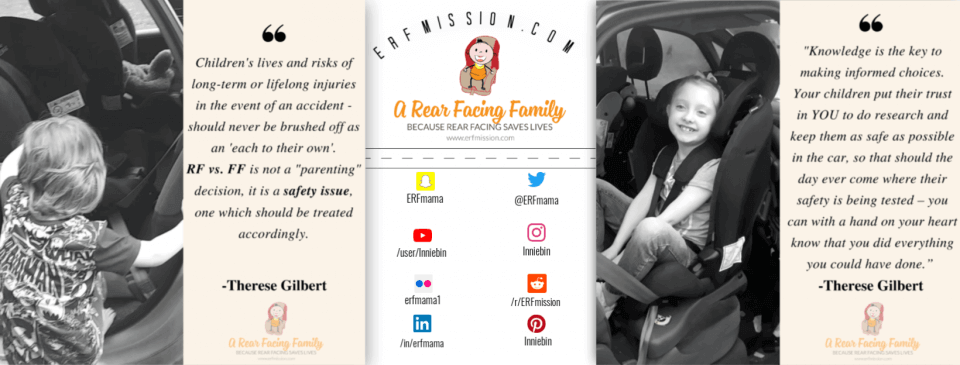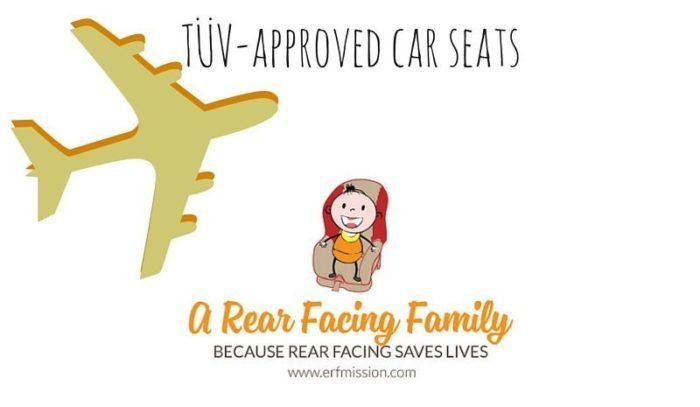Going on holiday? Bringing the kids? Then you definitely want to know what car seats are TÜV-approved.
TÜV-approved means that the seat has been tested and approved by TUV Rheinland to be suitable for use on an aircraft.









List of TÜV-approved car seats:
Manufacturer Model TÜV ID Group
Bébé Confort Pebble 0000023572 0+
Bébé Confort Pebble Plus 0000043330 0-12 kg and 45-75 cm height
Bébé Confort skirt 0000043330 0-12 kg and 45-75 cm height
Britax Römer Baby Safe Plus / B06 9811400300 0+
Britax Römer Eclipse 0000028802 I
Britax Römer Baby Safe Plus SHR 9811400300 0+
Britax Römer King QuickFix 8811400300 I
Britax Römer BABY-SAFE² i-SIZE 0000059040 0-13 kg and 40-83 cm body size
Concord Ion 0000026687 0+
Cybex Aton M 0000055564 0+
Cybex Aton M iSize 0000056419 0-13 kg and 45-87 cm body size
Diono Radian 5 0000055458 I / II
Eitel Plastic luftikid 7011000571 I / II
Joie iGemm 0000056604 0-13 kg and 40-85 cm body size
Joie Gemm 0000056603 0+
Kiddy Comfort Pro 0000026688 I / II / III
Kiddy Discovery Pro 0000026688 II / III
Kiddy Guardianfix Pro 0000026688 I / II / III
Kiddy Guardianfix Pro 2 0000026688 I / II / III
Kiddy Cruiserfix Pro 00000001021 II / III
Kiddy Energy Pro 00000001022 I
Kiddy Phoenixfix Pro 00000001022 I
Kiddy Phoenixfix Pro 2 00000001022 I
Kiddy Phoenixfix 3 0000051233 I
Kiddy Guardian Pro 0000026688 I / II / III
Kiddy Guardian Pro 2 0000026688 I / II / III
Kiddy Guardianfix 3 0000053409 I
Kiddy Evolution Pro 0000040931 0+
Kiddy Evolution Pro 2 0000040931 0+
Kiddy Smartfix 00000001021 II / III
Maxi Cosi Citi 8811410300 0
Maxi Cosi Citi (PLC) 8811410300 0
Maxi Cosi Citi 0000046894 0+
Maxi Cosi Mico 8011000571 0
Maxi Cosi Pebble 0000023572 0+
Maxi Cosi Pebble Plus 0000043330 0-12 kg and 45-75 cm height
Maxi Cosi Skirt 0000043330 0-12 kg and 45-75 cm height
Nuna Pipa Icon 0000056499 0-13 kg and 40-85 cm body size
Recaro Privia 0000044950 0+
Recaro Privia Evo 0000044950 0+
Recaro Guardia 0000044950 0+
Simple parenting Doona 0000043493 0+
Simple parenting Doona+ 0000058480 0+
Storchenmühle Maximum 2711305500 0
Takata Picomino Mini 0000033472 0+
Takata Toyota Mini 0000033472 0+
Takata Takata Mini 0000033472 0+
Takata TAKATA MINI I-SIZE 0000050911 45-80 cm height
Takata BMW G0 + 0000033472 0+
Takata Lexus Mini 0000033472 0+
Takata TAKATA MAXI 0000053832 II / III
I will keep this list up to date, but the list can also be found here on their website: https://www.tuv.com/landingpage/en/manufacturer-of-child-seats/
Airlines
The following airlines allow the use of the above-listed models. Nevertheless, the child seat may not be brought without prior consultation with the airline. For further information please contact the respective airline. There are of course other airlines that allow for car seats – some of them (along with their policy) can be found at the bottom of the post.
-
Lufthansa
-
Air Dolomiti
-
City Line
-
Condor
-
SunExpress Germany GmbH
-
euro Wings
-
DC aviation
-
German wings
-
Private Air
The FAA regulations and recommendations, govern American air carriers. CATSA (Canadian Air Transport Security Authority) and EASA (European Aviation Safety Agency) all recommend car seats on planes, but do not have this level of governance over their airlines–they defer to the individual airlines’ policies. This means you will need to check with your airline what their policy is in regard to car seats on their planes.
One of the most common car seats bought for planes and travel is the Britax Eclipse (also known as Römer Eclipse). It’s a very affordable seat and not very heavy.
Professional and Industry Recommendations:
The American Academy of Paediatrics recommends that children ride in child safety seats on planes, based on studies which show preventable deaths and injuries have occurred on ‘lap-children’:
“Occupant protection policies for children younger than 2 years on aircraft are inconsistent with all other national policies on safe transportation. Children younger than 2 years are not required to be restrained or secured on aircraft during takeoff, landing, and conditions of turbulence. They are permitted to be held on the lap of an adult. Preventable injuries and deaths have occurred in children younger than 2 years who were unrestrained in aircraft during survivable crashes and conditions of turbulence. The American Academy of Paediatrics recommends a mandatory federal requirement for restraint use for children on aircraft. The Academy further recommends that parents ensure that a seat is available for all children during aircraft transport and follow current recommendations for restraint use for all children. Physicians play a significant role in counseling families, advocating for public policy mandates, and encouraging technologic research that will improve protection of children in aircraft.”
The FAA also recommends that children sit in child safety seats or devices during air travel:
“Did you know that the safest place for your child on an airplane is in a government-approved child safety restraint system (CRS) or device, not on your lap? Your arms aren’t capable of holding your child securely, especially during unexpected turbulence. The Federal Aviation Administration (FAA) strongly urges you to secure your child in a CRS or device for the duration of your flight. It’s the smart and right thing to do so that everyone in your family arrives safely at your destination. The FAA is giving you the information you need to make informed decisions about your family’s travel plans.”
“Turbulence can happen with little or no warning. And when it does, the safest place for your child is in a CRS, not in an adult’s lap. Your arms just aren’t capable of holding your child securely, especially when turbulence is unexpected. Keeping your child in a CRS for the duration of the flight is the smart and right thing to do so that everyone in your family arrives safely at your destination. “
European Aviation Safety Agency (EASA) states:
“EASA cares for the safety of the youngest aircraft occupants and recommends the use of approved child seats on board of an aircraft.
Small infants are allowed to sit on the parent’s lap and be secured by a supplementary loop belt. A child over 24 months of age must occupy a separate seat. However, the normal seat lap belt in an aircraft is designed for the body of an adult person. It can cause injuries for children in an accident or during an aborted take-off. Children should be approximately 7 years of age or with a height of above approximately 125 cm in order to be able to use the standard seat lap belt. To enhance safety of the youngest passengers, EASA therefore strongly encourages that infants and small children be secured in an approved child seat, on a dedicated seat in the cabin. How this can be done depends on the individual airline. It is therefore important to check the airline’s website or get in contact with it.”
The NTSB (National Transport Safety Board) recommends that children sit in child safety seats or devices during air travel:
“On July 19, 1989, the unthinkable happened –fragments from an uncontained engine explosion took out all three independent hydraulic systems of a DC-10 traveling from Denver to Chicago, rendering all flight controls ineffective. Then an amazing thing happened – despite this catastrophic event, the pilots and emergency responders were able to save 185 [1] of the 296 people on board when the plane crashed in Sioux City, Iowa. The NTSB’s investigation of this accident led to 25 recommendations and advancements in aviation safety, including research on non-destructive inspection techniques for rotating engine parts and reliability of flight controls. Twenty-five years later, however, one issue that remains unaddressed is the issue of allowing lap-held infants.“
“[..]adults may not be able to maintain a secure hold on a lap-held child during turbulence or survivable accidents, as appears to have been the case with this united flight. Preventable deaths and injuries have occurred in children under age 2 who were unrestrained. […]For more than 30 years, the NTSB has investigated aircraft accidents involving unrestrained children and has issued safety recommendations asking the FAA to require that children under age 2 be appropriately secured in a child restraint.“
Other means of securing the child:
CARES harness
The system is for use by children between 22 and 44 lb. (10-20 kg) in weight, less than 40 inches (101,5 cm) tall and capable of sitting upright alone in a forward-facing position.
You can buy it:

Other useful links:
‘Virgin Atlantic Airlines’ Travel Information – http://bit.ly/1WdsJeT
Good Egg Safety – Flying with children: http://bit.ly/206XaIv
Study on CS-25 Cabin Safety Requirements by European Aviation Safety Agency: http://bit.ly/1P0GcpT
‘Iceland Air’ Travel Information: http://bit.ly/2cZJOtJ
‘British Airways’ Travel Information: http://bit.ly/2dkpIvq
‘Norwegian’ Travel Information: http://bit.ly/2cwBKmP
‘Scandinavian Airlines (SAS) Travel Information: http://bit.ly/2d4bfV5
‘Ryanair’ Travel Information: http://bit.ly/2fXi35T
‘Lufthansa’ Travel Information: http://bit.ly/2gVUm07
Article by EASA: Travelling with children: Background information on Child Restraint Systems.











Therese has completed the ‘Advanced Child Car Seat Training Course’ at TRL (Transport Research Lab) and is a CPD accredited car seat expert. She blogs about in-car safety, car seats, tips, reviews, giveaways and advice. She’s a mum on a mission to change the law and raise awareness. She is also a breastfeeding advocate and gentle parenting promoter who loves cloth nappies, baby-wearing, BLW and co-sleeping/bed-sharing.


